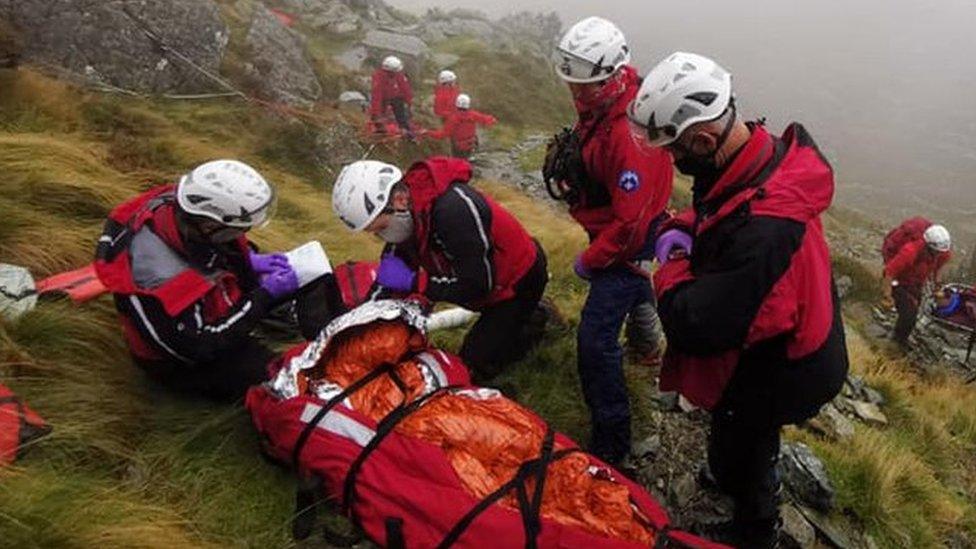Social media driving rise in mountain call-outs
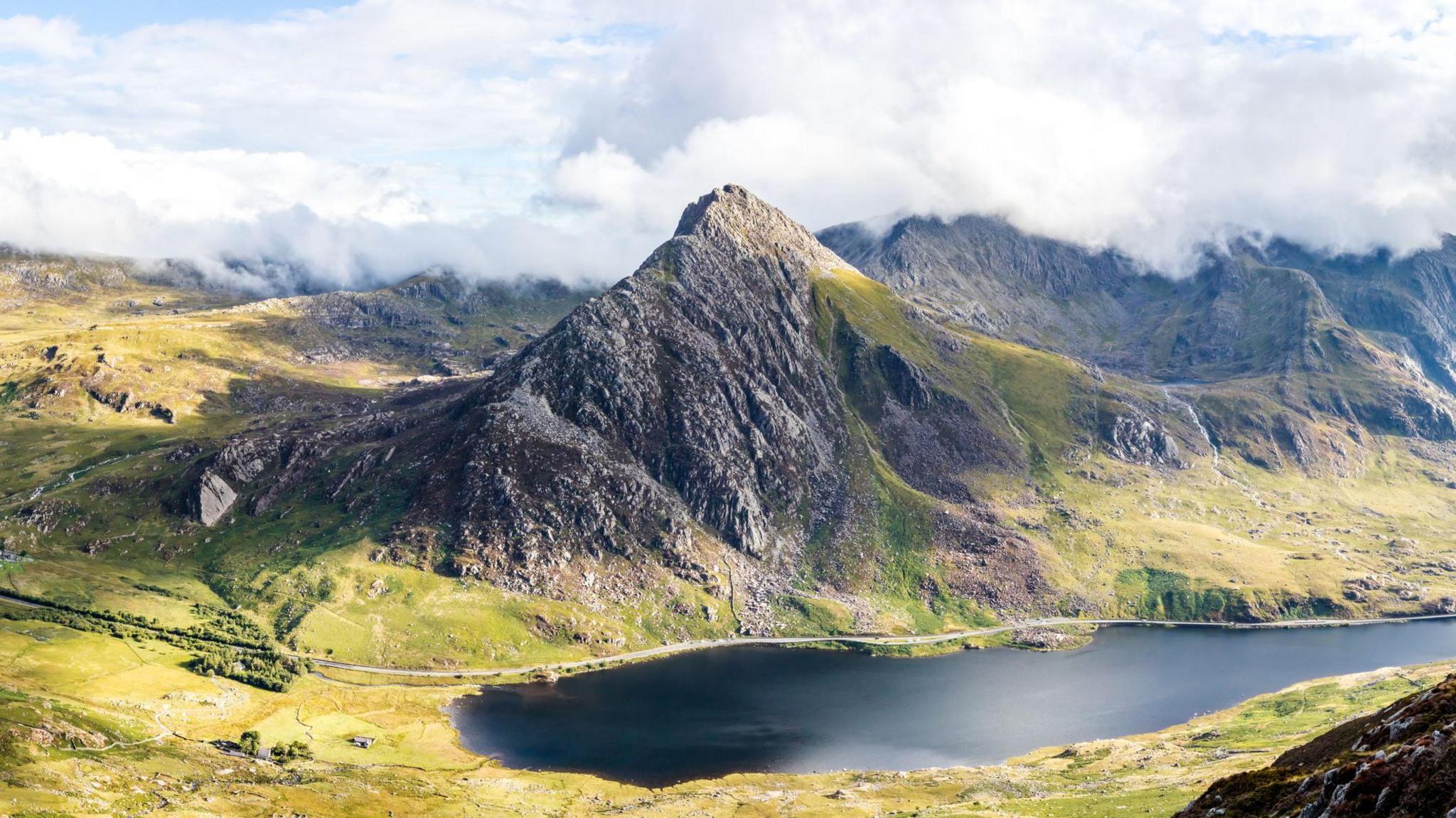
There have been a spate of rescue calls involving 3,000ft (0.91km) Tryfan in the Eryri National Park
- Published
Instagram and TikTok beauty shots are putting more strain on mountain rescuers as walkers follow social media posts and put themselves in danger, one team has said.
One of the main rescue teams in Wales' largest national park said it is already looking to be a record-breaking year for call outs.
Ogwen Valley Mountain Rescue's chairman Chris Lloyd said it reflected an increase in visitors to Eryri, also known as Snowdonia, and the rise in people publishing videos of the park on TikTok, Instagram and YouTube.
But he said those heading for the peaks need to prepare, rather than pulling up in their cars without a plan.
Plea to Easter visitors to respect national park
- Published25 March 2024
I almost died up a mountain scattering dad's ashes
- Published4 February 2024
‘Don’t climb the mountain if you’re not prepared’ Video, 00:01:50
- Published7 January 2022
The problem of social media mountain novices
There have been at least eight recorded deaths in the last year on and around the national park's peaks.
"This is a superb area, with a lot of exciting and good quality countryside here, and I can understand people wanting to go out and enjoy themselves," said Mr Lloyd, who has been a volunteer with the Ogwen rescue team for nearly 50 years.
"But they really do need to think, especially when going on the mountains.
"Think about what the consequences are, just even if the weather changes, or you have a minor injury, or if it gets dark - you should be prepared for those consequences."
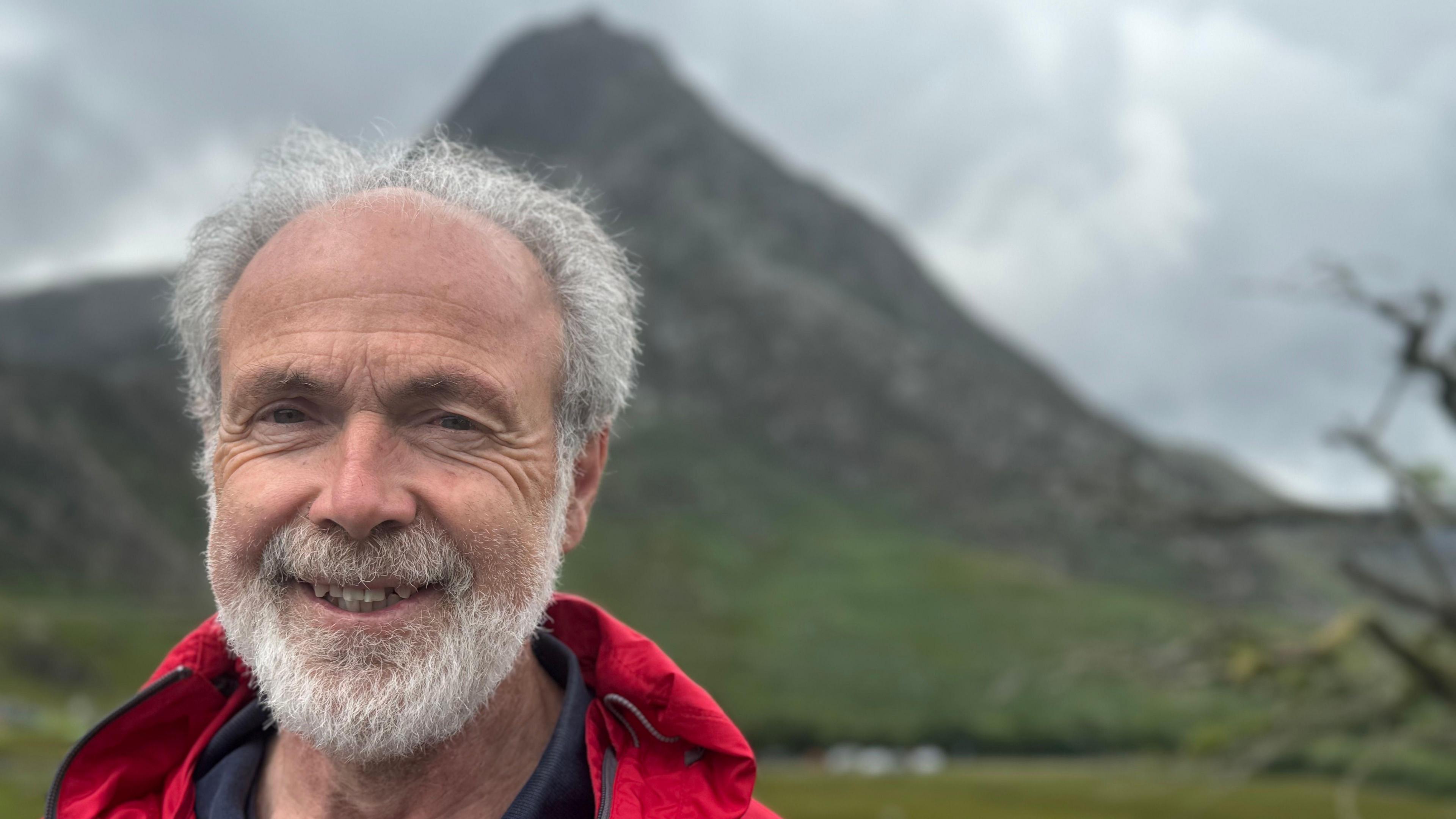
Chris Lloyd from Ogwen Valley Mountain Rescue said they want visitors to enjoy the rugged hills - but also to come prepared
The rescue team has had to deal with a number of incidents in recent weeks of inexperienced walkers tackling the mountain Tryfan, without appreciating its technical difficulty.
The mountain stands at 917m [3,010ft], and is often described as a peak that marks the line between hiking and mountaineering.
There are no marked footpaths to the summit, and it requires using hands and scrambling skills to reach the top.
It was used as a training ground by Sir Edmund Hillary and his team to test oxygen equipment and safety techniques before the first ever successful climb of Everest in 1953.
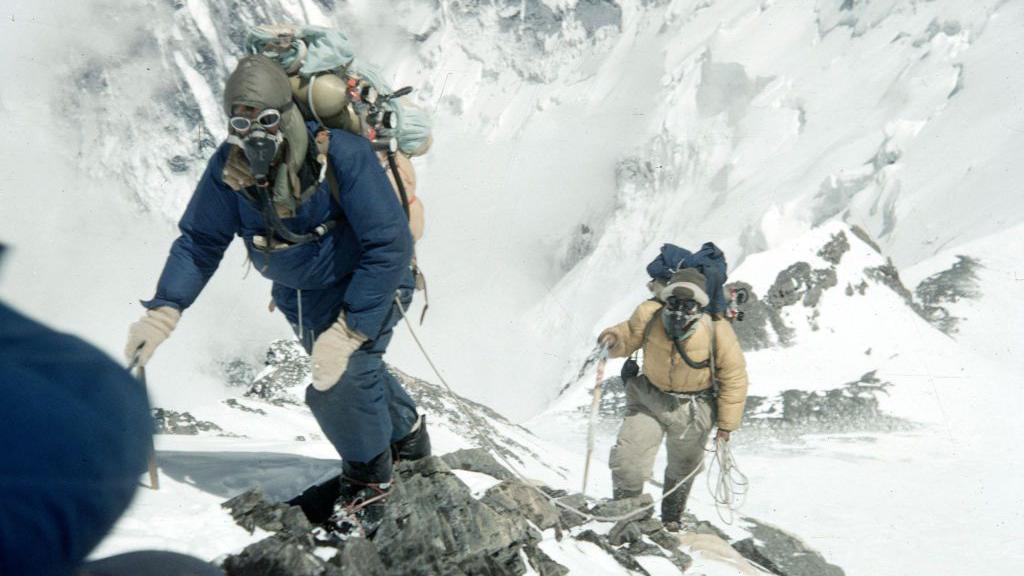
Tryfan was where Hillary's team tested vital equipment for the 1953 expedition to conquer Everest with Sherpa Tenzing Norgay
It is also a mountain responsible for the vast majority of call outs for the Ogwen Valley team - accounting for 28% of all call-outs so far this year - including two deaths.
"I think things have changes, certainly all mountain rescue teams have noticed a big difference since [Covid] lockdown," said Mr Lloyd.
"I think one of the things is social media. People are doing podcasts and people have seen them and getting the idea they can go up there.
"But they haven't seen how that original filmer was equipped and they haven't seen how experienced he was.
"We are getting a number of people going up getting into difficulties because they aren't suitably equipped or experienced."
The mountain rescue teams across the national park have urged visitors to make use of online services that offer advice about enjoying the outdoors safely.
It includes the group Adventure Smart, which started off in Wales and now covers the Lake District and Northern Ireland.
It includes the group Adventure Smart, which started off in Wales now covers the Lake District and Northern Ireland.
"Everybody has caught the outdoor adventure bug. Post Covid people have discovered that the outdoors is good for their wellbeing and are heading for the hills and the water - which is great," said Emma Edwards-Jones from Adventure Smart.
"But many of them don't have an understanding of the risk involved.
"They could take a few simple actions which would help them mitigate those risks, have a far more enjoyable day, and actually not have to call our overworked mountain rescue teams out."
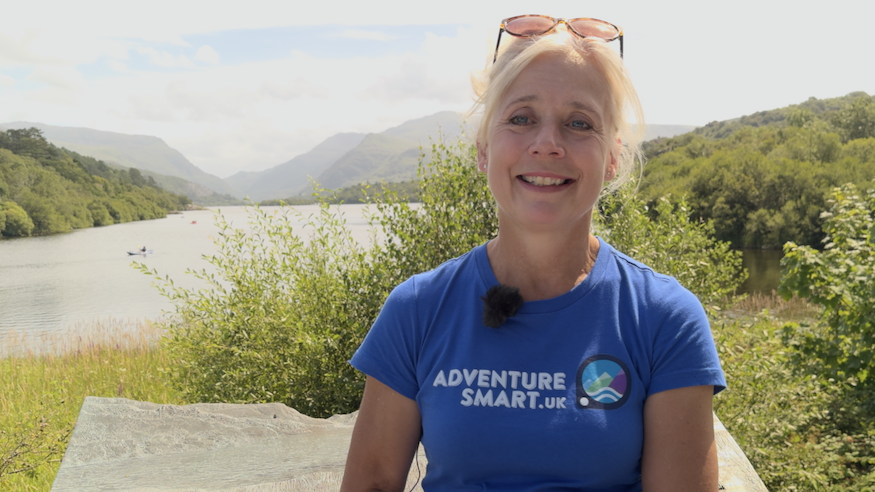
Think about your fitness, take the right gear with you, and check the weather, said Emma Edwards-Jones from Adventure Smart
She urged visitors to ask themselves three questions: 'Are they fit enough for the activity? Do they know what the weather will be? Have they got the right equipment and clothing?'
"A large number of incidents that mountain rescue deals with are talking people and walking people off the mountain who have got cold and lost, they are not actually incidents in terms of accidents, said Ms Edwards-Jones.
"If we can remove those from the equation then we are really helping our mountain rescue teams."
- Published23 July 2024

- Published25 July 2023
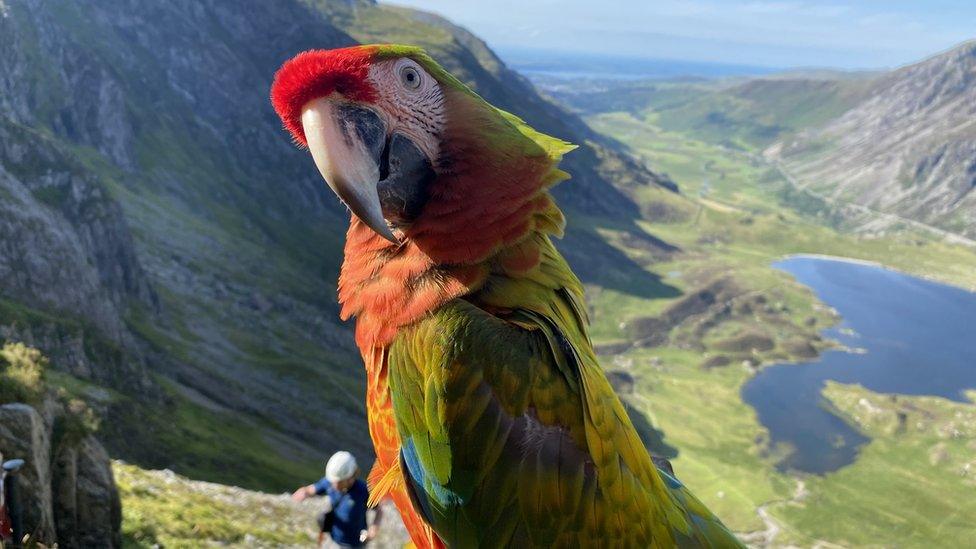
- Published29 September 2021
